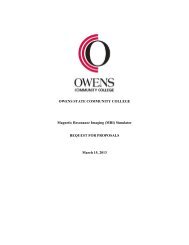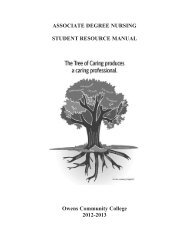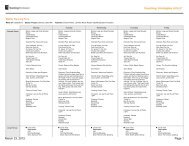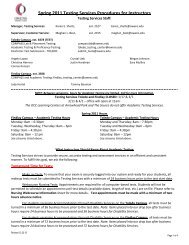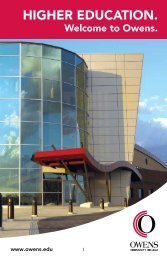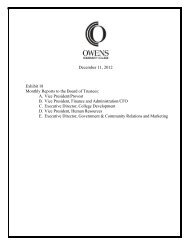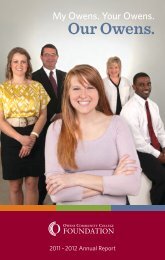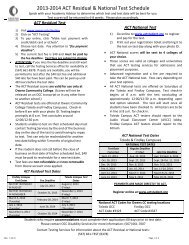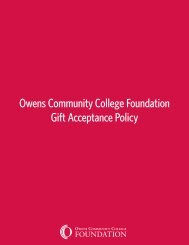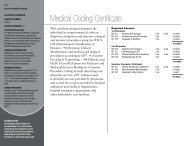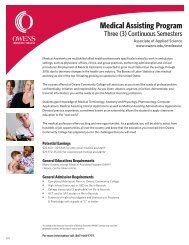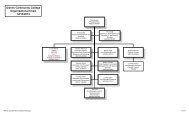highlights ealth care - Owens Community College
highlights ealth care - Owens Community College
highlights ealth care - Owens Community College
Create successful ePaper yourself
Turn your PDF publications into a flip-book with our unique Google optimized e-Paper software.
Surgical Program First class to graduate from the Owen’s Surgical Program in 1979.<br />
The Surgical Program was first introduced<br />
to the community in 1978. Operating Room<br />
Technician (ORT) was first recognized as<br />
a <strong>care</strong>er in 1967 under the auspices of the<br />
Association of Perioperative Nurses (AORN).<br />
During WWII, a shortage of nurses prompted<br />
the beginnings of necessary ancillary help in<br />
the operating room (OR). The local hospitals<br />
began their own on-the-job training programs,<br />
but soon recognized that a formal education<br />
would be valuable. As a result, in 1978,<br />
Michael J. <strong>Owens</strong> Technical <strong>College</strong> initiated<br />
the first ORT class as a certificate program<br />
under the direction of Dr. Peggy Bensman,<br />
Dean, H<strong>ealth</strong> Technologies.<br />
Changes in the certification process prompted<br />
the change from a certificate program<br />
to an associate degree in 1979. Leadership<br />
provided by Annette Jones, Chairman, and<br />
Dr. Bensman provided the expertise to<br />
successfully convert and rename the program<br />
to Surgical Assisting Technology. In July<br />
1980, after graduating the first class with an<br />
Associate Degree and successful completion<br />
of the certification process, the <strong>College</strong><br />
submitted its request for accreditation. The<br />
name of the program was again changed<br />
to better reflect the <strong>care</strong>er and certification<br />
process to Surgical Technology in the Fall of<br />
1980. Initial accreditation was obtained after<br />
the site visit in February 1981.<br />
The Surgical Program continued to flourish<br />
with the help of the hospitals in the community<br />
during the 1980s under the direction<br />
of Annette Jones and Peggy Bensman.<br />
Ms. Jones was active in the Association<br />
of Surgical Technologists and often reviewed<br />
new textbooks. In 1991, Annette Jones left<br />
the <strong>College</strong> and the program came under the<br />
direction of Janell Lang and Kris Flickinger.<br />
During the 1990s, they steered the program and<br />
maintained its reputation in the community.<br />
The Sterile Processing Certificate Program<br />
was developed in 2003 to meet the increasing<br />
demand for trained personnel in vital areas of<br />
the h<strong>ealth</strong> <strong>care</strong> community.<br />
“Current facilities allow students<br />
to gain critical skills in a more<br />
realistic setting.”<br />
Renovation of the laboratory facility occurred<br />
under the leadership of Dawn Wetmore and<br />
Kris Flickinger in 2003. Current facilities<br />
allow students to gain critical skills in<br />
a more realistic setting. Students are active<br />
today in the community participating<br />
in the Relay for Life and Blood Drive<br />
held annually on campus. Students and<br />
graduates of our program are recognized in<br />
the local community<br />
for their expertise in<br />
the surgical field.<br />
Surgical Program students Kris Shake and Toby Bean volunteering for the Bloodmobile.<br />
Kris Flickinger<br />
h<strong>ealth</strong> <strong>care</strong> <strong>highlights</strong> 9



